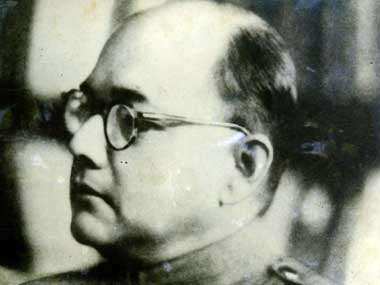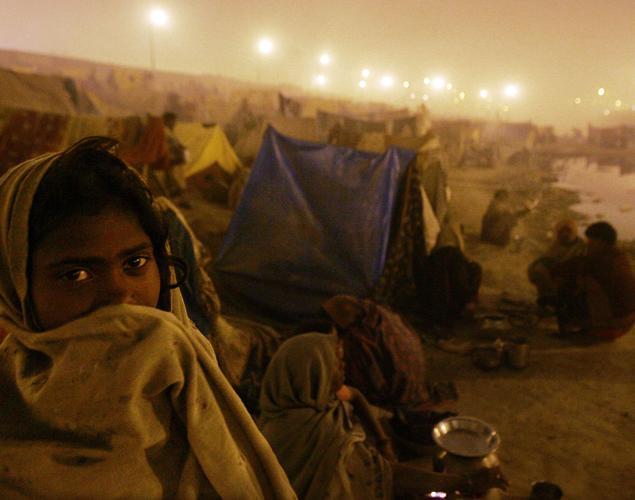January 22, 2016
London: Netaji Subhas Chandra Bose was cremated in Taihoku, Japanese name for Taipei, as the coffin was too long to be put in plane bound for Tokyo, where the body was originally scheduled to be taken for performing his last rites, a British website claimed, quoting a Taiwanese official present at the cremation.

January 22, 2016
London: Netaji Subhas Chandra Bose was cremated in Taihoku, Japanese name for Taipei, as the coffin was too long to be put in plane bound for Tokyo, where the body was originally scheduled to be taken for performing his last rites, a British website claimed, quoting a Taiwanese official present at the cremation.

The website, www.bosefiles.info has been coming out with serialized 'revelations' backing the theory that the Indian revolutionary leader died in a plane crash on 18 August, 1945, in Taiwan.
In its latest post on Thursday, the site created by London-based journalist and Netaji's grand nephew Ashish Roy referred to the evidence provided by Tan Ti-Ti, who was in charge of issuing cremation permits in Taipei, together with that of other local officials, to buttress its claim.
Tan Ti-Ti, in his testimony contained in the British Foreign Office's file number FC1852/6 of 1956, said that he personally attended to Bose's body at the concerned crematorium.
It also transpires from the file that Japanese army officers probably did not issue a death certificate in Bose's name to maintain secrecy about his demise.
Ko Keng Yuan, who was the Director of the Health Centre in Taipei, stated the matter of Bose's death and whether the cremation permit was issued under an assumed name "were important secrets of the Japanese military".
Eleven years after the alleged air crash, British Consul General in Taiwan Albert Franklin wrote to the Taiwanese government requesting an investigation into the death of Bose.
In response, CK Yen, Chairman of the Taiwan Provincial Government, sent a detailed police report dated 27 June, 1956. This included an interview with Tan Ti-Ti, who said the cremation took place on 22 August, 1945.
A Japanese army officer who accompanied the body told Tan Ti-Ti: "The deceased was Bose, the Indian leader who, proceeding to Tokyo on important business, was injured when his plane was involved in an accident."
The previous day – 21 August, 1945 – the same Japanese officer, according to Tan Ti-Ti, "submitted the death certificate of a certain Ichiro Okura".
Yen clarified to Franklin that during World War II in the case of military personnel – Bose was then Supreme Commander of the Indian National Army – without family members in Taiwan, "permission for cremation was granted on the strength of a certificate from a military hospital".
This appears to have occurred in the case of Bose, the website claimed.
The police findings based on a report prepared by Taiwan's Department of Health said: "There is a register of cremations at the Municipal Health Centre and the officers of the Health Centre are of the opinion that the entry was made in the name of Ichiro Okura."
Tan Ti-Ti confirmed that on the day of the cremation, the same Japanese army officer "came to the crematorium in a car in the company of an Indian", said to be Bose's aide-de-camp Colonel Habibur Rehman, who survived the crash.
He went on to say "the Indian, it was said he was Bose's follower, some said he was an aide-de-camp; he was dressed in the white garment of Japanese soldiers under medical care, wore slippers, parts of his face were bandaged; he was tall and swarthy, wept bitterly and seemed extremely sorrowful."
Tan Ti-Ti asserted he and another person called Lin Sui Mu opened the coffin. He added the body had been put into a coffin for conveyance to Tokyo but the coffin was too big for aeroplanes available at the time. It was, therefore, cremated in Taipei.
The next day (23 August, 1945), the Indian (Col. Rehman) and the same Japanese army officer came to collect the ashes, Tan Ti-Ti further maintained.
Tan Ti-Ti's testimony matches that of Colonel Habibur Rehman. "I requested the (Japanese) Army authorities to arrange for the early transportation of the body either to Singapore or Tokyo, preferably to Singapore," Rehman testified on August 24, 1945."
He went on: "On 21-8-45 a senior Japanese Staff Officer informed me in the hospital that the length of box (coffin) did not allow the box being put into the plane. He suggested that the body be cremated in Taihoku.
"Seeing no other alternative, I agreed to the suggestion and the body was cremated on 22-8-1945 at Taihoku under the arrangement of the Army authorities. The ashes were collected on 23-8-1945."
Courtesy: Firstpost















































































































